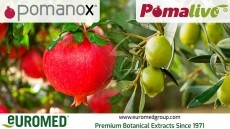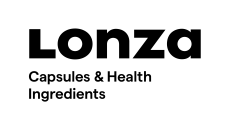Echinacea and green teas on the rise, report says
green teas and echinacea - are set to spend £191m in Britain this
year alone, according to a new report.
Research firm Mintel said this is a 32 per cent increase since 2002 and the trend will continue.
By 2011 the group predicts annual consumer spend will break the £250m barrier.
The company said consumers are becoming increasingly aware of the positive attributes of green teas and echinacea, and the herbal sector is claiming the largest share of the complementary market rise.
The report not only points out the opportunities for manufacturers to use herbals in their products and for retailers to stock them, but also shows an opening for businesses to cash in on the increasing use of the internet by consumers, who are turning to the web to learn more about products on offer.
Indeed, echinacea is becoming the consumers product of choice.
By the end of last year British retailer Boots reported selling almost 7,000 packs of echinacea per week - around one per minute.
A study last month showed that echinacea may cut the risk of catching the common cold by almost 60 per cent.
US researchers writing in The Lancet Infectious Diseases combined the results of 14 different studies with positive results.
In one of the studies they found in that echinacea taken in combination with vitamin C reduced cold incidence by 86 per cent, and when the herbal was used alone the incidence was reduced by 65 per cent.
However, a much-publicised study in the New England Journal of Medicine in July 2005 concluded that the herb did not have a significant effect on infection with a rhinovirus, but the methodology was strongly questioned by herbal experts.
In particular, the study did not use a commercially available product, and dosage was lower than the standard dose in the US.
Green teas have also made many gains, with a wealth of scientific data supporting the products for a variety of healthcare potential.
Scientific studies have pointed to the green tea's potential anti-cancer effect and positive effects on age-related diseases like Alzheimer's.
Green teas, echinacea and other herbals account for almost two thirds of the market, which has grown 10 per cent in a year from £172m. Mintel also says this sector has seen the largest overall growth since 2002 as well.
The company used a sample of 1, 039 people aged 15 and above, showing almost half (49 per cent) of British women and almost three in ten (28 per cent) men have used complementary medication and would use it again.
Senior market analyst Alexandra Richmond said: " These treatments have now become a popular lifestyle choice, and with retailers such as Tesco and Boots now producing own brand ranges of complementary medicine, we can see just how far these treatments have come from their hippie roots. "
Mintel has said that increasingly consumers are turning to the internet to research symptoms, self-diagnose and look up what might be available to them.
But the report also shows there is still a lack of knowledge about complementary treatments.
Some two in five (40 per cent) people say they don't know enough about complementary medicines, while almost one in five (18 per cent) say that they don't know what to use for particular illnesses.
Richmond explained: " Although some people do still seem unsure as to when to use complementary medicines, recent legislation has meant that manufacturers can now highlight on the label which illnesses and conditions can be treated with their product.
"This will not only allow people to shop by health concern rather than ingredient, but also helps to educate them about the benefits of the individual ingredients.
Once they know the facts, these people are much more likely to buy into the market."











